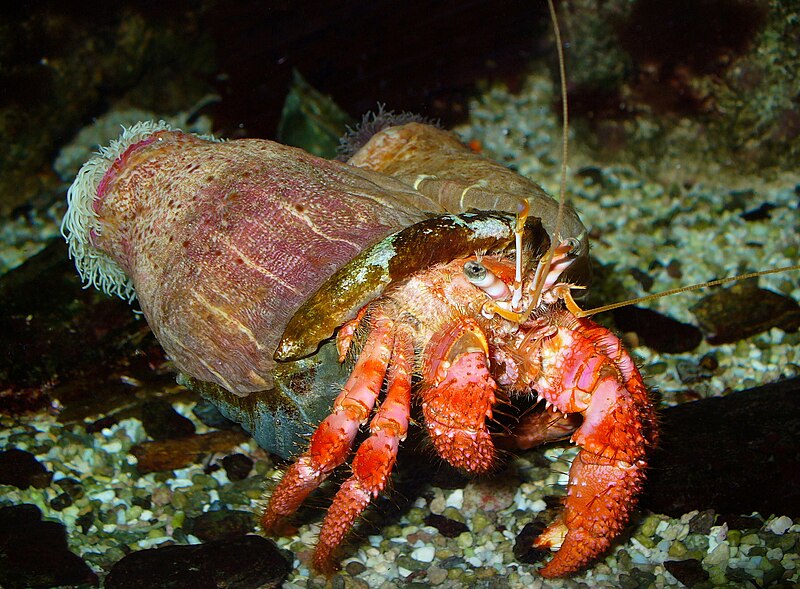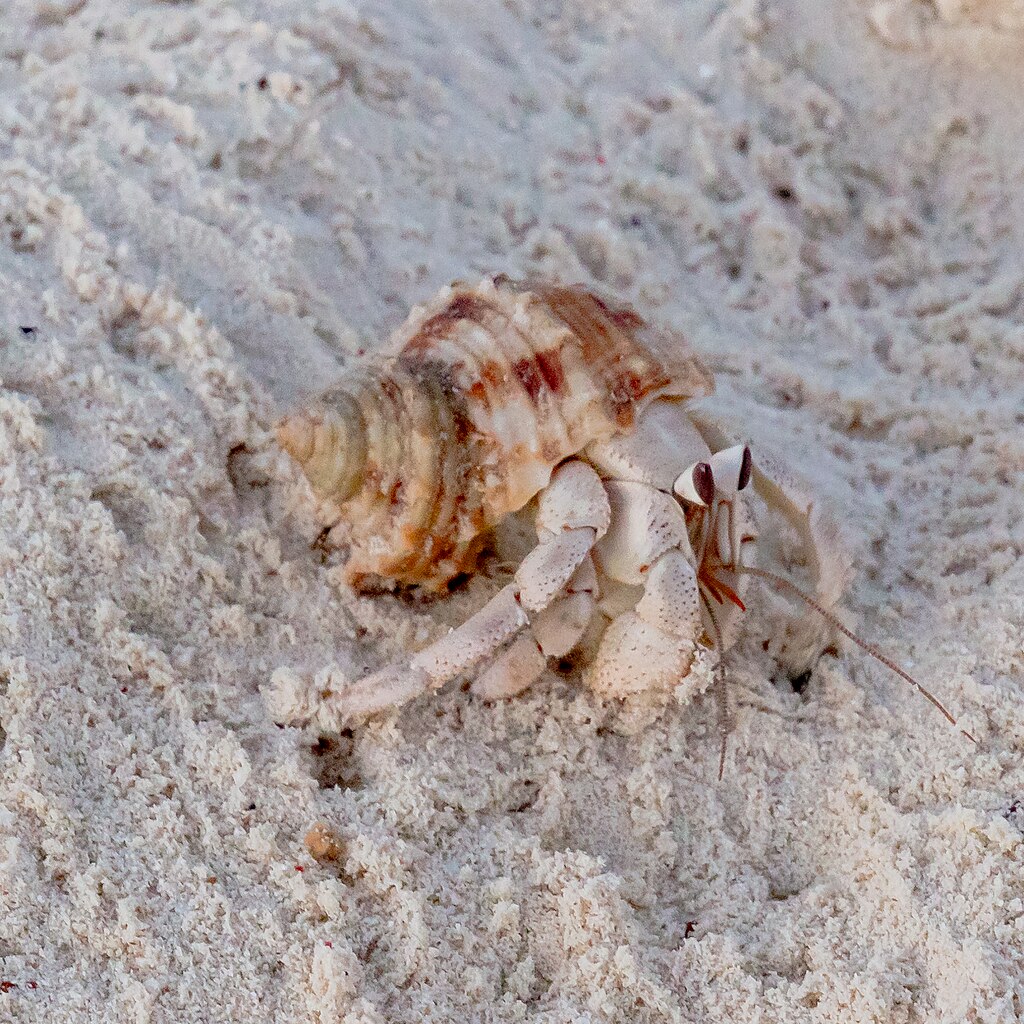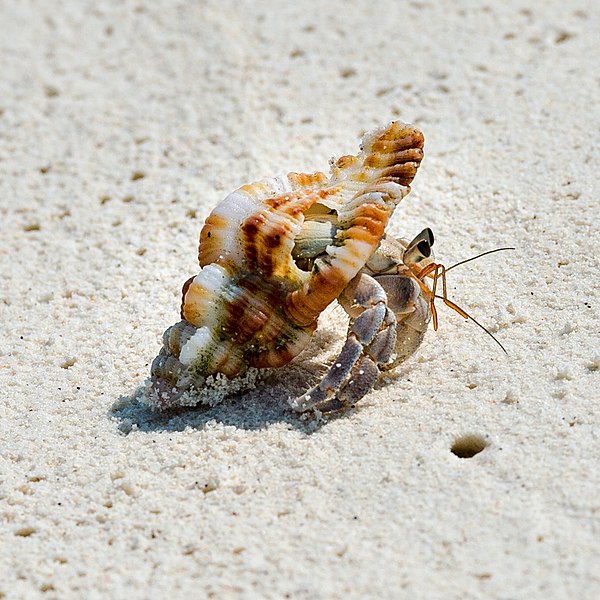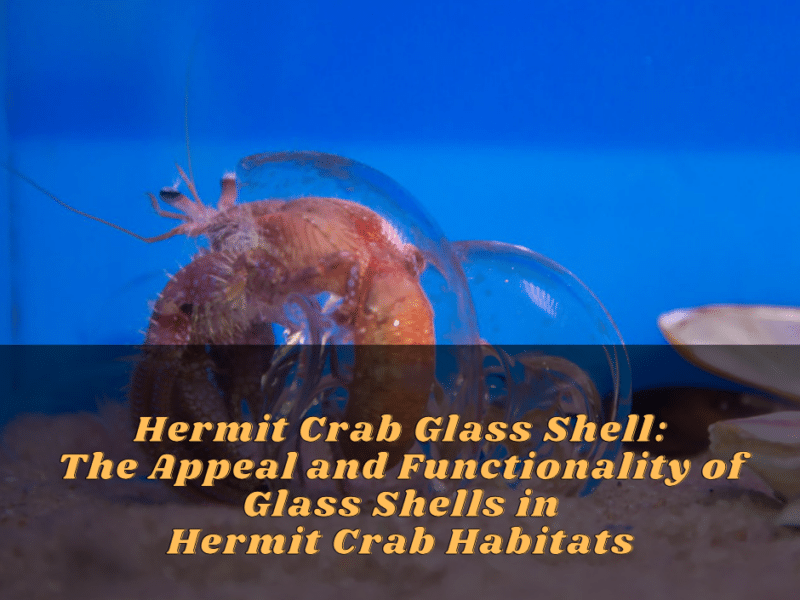Introduction to Hermit Crab Humidity
In order to create a happy and healthy habitat for your pet hermit crab, it is crucial to ensure that the humidity levels are properly maintained. Hermit crabs require a specific range of humidity in their tank in order to thrive. This article will explore the importance of maintaining proper humidity levels for hermit crab health and the consequences of both low and high humidity levels.
The importance of maintaining proper humidity levels for hermit crab health
Proper humidity levels are vital for the respiratory health of hermit crabs. If the tank air is too dry, the crabs can essentially suffocate. On the other hand, excess humidity is also not desirable as it can lead to condensation and create an environment that encourages the growth of bacteria and fungus in the tank.
To ensure that the humidity levels are within the appropriate range, it is recommended to install a hygrometer in the hermit crab habitat. This device will allow you to track the humidity levels and make necessary adjustments when needed. The ideal relative humidity range for hermit crabs is around 70-80%.
The consequences of low or high humidity levels
If the humidity levels in the hermit crab habitat are too low, it can have detrimental effects on the health of the crabs. Dry air can cause respiratory problems and make it difficult for the hermit crabs to breathe properly. It can also lead to dehydration, resulting in a negative impact on their overall well-being.
On the other hand, if the humidity levels are too high, it can create a damp environment that promotes the growth of bacteria and fungus. This can lead to infections and diseases in hermit crabs. Additionally, high humidity levels can cause issues with moulting, as the excessive moisture can interfere with the shedding process.
To maintain proper humidity levels, misting the hermit crab habitat with dechlorinated water 1-2 times per day can help keep the humidity levels consistent. Regularly monitoring the hygrometer and making adjustments as needed will ensure a suitable environment for your pet hermit crabs.
By understanding the importance of maintaining proper humidity levels and the consequences of imbalances, you can provide a comfortable and healthy habitat for your hermit crabs to thrive in.
Understanding Hermit Crab Habitat
In order to create a happy and healthy habitat for hermit crabs, it is crucial to ensure that the humidity levels are properly maintained. Hermit crabs require a specific range of humidity in their tank in order to thrive. This article will explore the importance of maintaining proper humidity levels for hermit crab health and the consequences of both low and high humidity levels.
Creating a suitable environment for hermit crabs
A suitable environment for hermit crabs should mimic their natural habitat as closely as possible. This includes providing the right levels of humidity, temperature, substrate, and hiding places. Proper humidity levels are particularly important for the respiratory health of hermit crabs.
To maintain the ideal humidity range of 70-80%, it is recommended to install a hygrometer in the hermit crab habitat. A hygrometer measures the relative humidity in the tank and allows you to track and adjust the levels accordingly.
In addition to monitoring the humidity levels, misting the habitat with dechlorinated water 1-2 times per day can help keep the humidity consistent. This prevents the air from becoming too dry and provides the necessary moisture for hermit crabs to thrive.
Factors that affect humidity levels in the habitat
Several factors can affect the humidity levels in a hermit crab habitat. These include:
- Ventilation: Proper airflow is important to prevent stagnant air and excess humidity. However, too much ventilation can cause the humidity levels to drop.
- Temperature: Higher temperatures can increase evaporation and reduce humidity levels, while lower temperatures can lead to condensation and higher humidity.
- Substrate: Using appropriate substrates, such as coconut fiber or sphagnum moss, can help retain moisture and regulate humidity levels in the tank.
- Water source: Providing a water dish in the habitat will not only serve as a drinking source for hermit crabs but also contribute to the overall humidity levels.
By understanding the factors that affect humidity levels and implementing measures to maintain the ideal range, you can ensure a comfortable and healthy environment for your pet hermit crabs to thrive in.
Understanding Hermit Crab Habitat
The importance of maintaining proper humidity levels for hermit crab health cannot be overstated. In order to create a happy and healthy habitat for these creatures, it is crucial to ensure that the humidity is within the correct range. This article will provide information on the role of humidity in hermit crab health, as well as the consequences of both low and high humidity levels.
Creating a suitable environment for hermit crabs
A hermit crab’s environment should closely resemble their natural habitat. This means providing the right levels of humidity, temperature, substrate, and hiding places. Maintaining the ideal humidity range of 70-80% is particularly important for their respiratory health. To achieve this, it is recommended to install a hygrometer in the hermit crab habitat. A hygrometer measures the relative humidity in the tank, allowing you to track and adjust the levels accordingly.
In addition to monitoring the humidity levels, misting the habitat with dechlorinated water 1-2 times per day can help maintain consistent humidity. This prevents the air from becoming too dry and provides the necessary moisture for hermit crabs to thrive.
Factors that affect humidity levels in the habitat
Several factors can influence the humidity levels in a hermit crab habitat. These include:
- Ventilation: Proper airflow is crucial to prevent stagnant air and excess humidity. However, excessive ventilation can cause humidity levels to drop.
- Temperature: Higher temperatures can increase evaporation and reduce humidity levels, while lower temperatures can lead to condensation and higher humidity.
- Substrate: Using appropriate substrates, such as coconut fiber or sphagnum moss, can help retain moisture and regulate humidity levels in the tank.
- Water source: Providing a water dish in the habitat serves as a drinking source for hermit crabs and contributes to overall humidity levels.
By understanding these factors and implementing measures to maintain the ideal range, a comfortable and healthy environment can be ensured for pet hermit crabs to thrive in.
Installing a Hygrometer
The role of a hygrometer in measuring humidity levels
A hygrometer is a device used to measure relative humidity. When placed in a hermit crab habitat, it allows you to accurately monitor the humidity levels in real-time. By regularly checking the hygrometer, you can ensure that the humidity stays within the optimal range of 70-80%.
How to properly install and calibrate a hygrometer in the crab habitat
When installing a hygrometer in your hermit crab habitat, follow these steps:
- Choose an appropriate location: Place the hygrometer in an area of the tank that is easily accessible for monitoring purposes. Avoid placing it near heat sources or water, as these can affect the accuracy of the readings.
- Calibrate the hygrometer: Before using the hygrometer, it is important to calibrate it for accurate measurements. Follow the manufacturer’s instructions for calibration, as different types of hygrometers may require different methods.
- Regularly check and adjust: Check the hygrometer multiple times throughout the day to ensure that the humidity levels are within the desired range. If the humidity falls below 70%, adjust the habitat by misting or adding more moisture as needed.
By properly installing and calibrating a hygrometer in the hermit crab habitat, you can effectively monitor and maintain the humidity levels necessary for your pet’s well-being.
Maintaining Humidity Levels
Ideal humidity range for hermit crabs: 70-80%
To create a suitable environment for hermit crabs, it is essential to maintain the ideal humidity range of 70-80%. This ensures their respiratory health and overall well-being. Here are some tips on how to maintain the humidity levels in your hermit crab habitat:
- Install a hygrometer: A hygrometer is a device that measures relative humidity. By placing it in the tank, you can easily track and monitor the humidity levels in real-time. Make sure to choose an appropriate location for the hygrometer, away from heat sources and water.
- Regularly check the hygrometer: It is important to check the hygrometer multiple times throughout the day to ensure that the humidity levels stay within the desired range. If the humidity falls below 70%, adjustments should be made by misting the habitat or adding more moisture as needed.
Misting techniques to keep humidity consistent
Misting the hermit crab habitat with dechlorinated water 1-2 times per day can help maintain consistent humidity levels. Here are some steps to follow:
- Use dechlorinated water: Make sure to mist the habitat with dechlorinated water to prevent any harm to your hermit crabs.
- Mist 1-2 times per day: Gently mist the enclosure 1-2 times per day to provide the necessary moisture. Be careful not to over-mist, as excessive moisture can lead to mold growth.
By following these techniques, you can ensure that the humidity levels in your hermit crab habitat are properly maintained, creating a comfortable and healthy environment for your pets to thrive in. Remember to regularly monitor the humidity levels and make any necessary adjustments for the well-being of your hermit crabs.
Using Under-Tank Heaters
The benefits of using under-tank heaters
Under-tank heaters, also known as heat pads, are an ideal solution for properly heating your hermit crab habitat. They provide a consistent and even heat source, which is essential for maintaining the ideal temperature range. Here are some benefits of using under-tank heaters:
- Consistent heat distribution: Under-tank heaters distribute heat evenly across the tank, ensuring that all areas of the habitat are adequately warmed. This helps create a comfortable environment for your hermit crabs.
- Regulate temperature: Under-tank heaters come with adjustable settings, allowing you to control the temperature to match the needs of your hermit crabs. It is important to maintain a temperature range of 75-85 degrees Fahrenheit for optimal health.
- Safe and energy-efficient: Under-tank heaters are designed to be safe for both the hermit crabs and the tank. They are energy-efficient and do not produce any harmful emissions.
Preventing overheating by providing adequate bedding
When using under-tank heaters, it is crucial to provide an appropriate amount of bedding to prevent your hermit crabs from getting uncomfortably hot. Here are some key points to consider:
- Add at least an inch of bedding: Place a sufficient amount of bedding on top of the under-tank heater to create a buffer between the heat source and your hermit crabs. This will help regulate the temperature and prevent overheating.
- Choose the right bedding material: Select a bedding material that retains moisture well, such as coconut fiber or eco-earth. This will assist in maintaining the humidity levels in the tank and providing a comfortable substrate for your hermit crabs.
- Monitor temperature regularly: It is important to regularly monitor the temperature within the habitat to ensure it remains within the recommended range. Use a thermometer to check the temperature at different locations in the tank.
By using under-tank heaters and providing adequate bedding, you can create a safe and comfortable environment for your hermit crabs, ensuring their well-being and overall health. Remember to always monitor the temperature and humidity levels to provide the best possible conditions for your beloved pets.
Water Source for Humidity
Using dechlorinated water for misting
When it comes to maintaining humidity in your pet hermit crab habitat, using the right water source is important. Misting the habitat with dechlorinated water helps keep the humidity levels consistent. Here’s why using dechlorinated water is beneficial:
- Remove harmful chemicals: Tap water often contains chlorine and other chemicals that can be harmful to hermit crabs. Using dechlorinated water ensures that these chemicals are removed, providing a safer environment for your pets.
- Maintain proper humidity: Dechlorinated water helps to maintain the proper humidity levels in the habitat. It adds moisture to the air, creating a humid environment that is essential for the well-being of hermit crabs.
- Prevent shell problems: Hermit crabs rely on moisture in the air to keep their shells healthy and prevent them from drying out. Misting with dechlorinated water helps to provide the necessary moisture for their shells.
Frequency of misting to maintain humidity levels
To ensure that the humidity levels in the hermit crab habitat remain at the recommended range of 70-80%, it is important to mist the enclosure with dechlorinated water at the appropriate frequency. Here are some guidelines to follow:
| Humidity Level | Misting Frequency |
|---|---|
| Below 70% | Mist 1-2 times per day |
| Around 70-80% | Monitor closely and mist as needed |
| Above 80% | Allow the enclosure to dry out slightly before misting again |
By monitoring the humidity levels with a hygrometer and adjusting the misting frequency accordingly, you can ensure that your hermit crabs have a suitable habitat with optimal humidity levels.
Adjustments and Monitoring
Regularly checking and adjusting humidity levels
Ensuring that the humidity levels in your hermit crab habitat remain within the recommended range of 70-80% is crucial for the health and well-being of your pets. Here are some tips for monitoring and adjusting humidity levels:
- Use a hygrometer: Install a hygrometer in the enclosure to accurately measure the humidity levels. This device will help you keep track of any fluctuations and make necessary adjustments.
- Mist as needed: Regularly mist the habitat with dechlorinated water to maintain the desired humidity levels. Pay close attention to the hygrometer readings and mist more frequently if the levels drop below 70%.
- Allow drying out: If the humidity levels exceed 80%, it is important to allow the enclosure to dry out slightly before misting again. This will prevent excessive moisture buildup, which can be detrimental to your hermit crabs.
Signs of inadequate or excessive humidity
It is important to be vigilant and observe your hermit crabs for any signs of inadequate or excessive humidity. Here are some indicators to look out for:
- Dry or cracked shells: If the humidity levels are too low, your hermit crabs’ shells may become dry and cracked. This can lead to health issues and discomfort for your pets.
- Lethargy and decreased activity: Hermit crabs may become sluggish and less active if the humidity levels are not within the appropriate range. This can indicate that the environment is not suitable for them.
- Mold or excessive moisture: On the other hand, if the humidity levels are too high, you may notice the growth of mold or excessive moisture in the habitat. This can be harmful to the hermit crabs and should be addressed immediately.
By regularly checking the humidity levels and making necessary adjustments, you can create a comfortable and safe environment for your hermit crabs to thrive in.
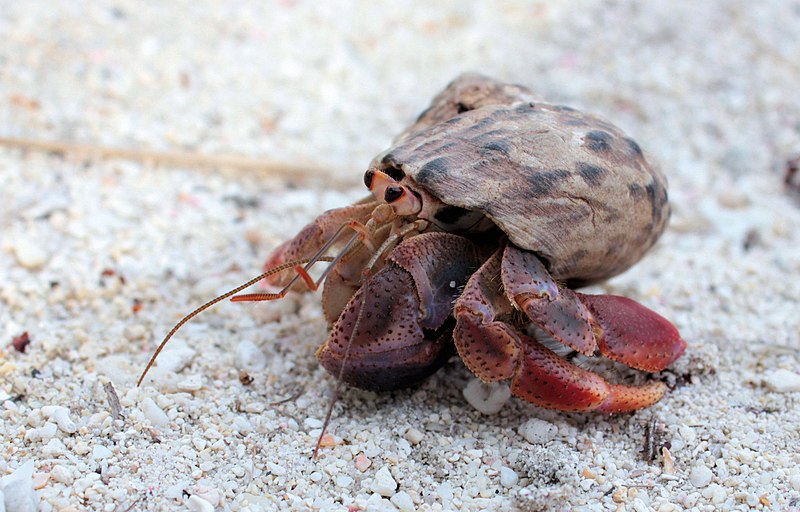
Other Factors Affecting Humidity
The influence of temperature, substrate, and ventilation on humidity
In addition to monitoring and adjusting the humidity levels in your hermit crab habitat, it is important to consider other factors that can affect humidity. Here are a few key factors to keep in mind:
| Factor | Effect on Humidity |
|---|---|
| Temperature | Higher temperatures can cause increased evaporation and result in higher humidity levels. Conversely, lower temperatures can cause a decrease in humidity. |
| Substrate | The type of substrate used in the habitat can also impact humidity. Certain substrates, like coconut fiber or sphagnum moss, have natural moisture-holding properties and can help maintain humidity levels. |
| Ventilation | Adequate ventilation is crucial for maintaining a healthy habitat, but it can also affect humidity. Proper airflow can help prevent excessive moisture buildup, while poor ventilation can lead to stagnant air and higher humidity levels. |
Maintaining a balance for the well-being of hermit crabs
Creating and maintaining the appropriate humidity levels in your hermit crab habitat is essential for the well-being of your pets. By regularly monitoring the humidity with a hygrometer and making necessary adjustments, you can ensure that your hermit crabs have a comfortable and thriving environment.
Remember to consider other factors like temperature, substrate, and ventilation to maintain a balance of conditions that will promote the health and happiness of your hermit crabs. By providing the right humidity levels and addressing any signs of inadequate or excessive humidity, you can create an optimal habitat for your beloved pets.
Conclusion
Summary of key points on maintaining proper humidity levels
- Monitoring and adjusting the humidity levels in the hermit crab habitat is crucial to their well-being.
- The ideal relative humidity range for hermit crabs is between 70% and 80%.
- Factors such as temperature, substrate, and ventilation can affect humidity levels.
- Higher temperatures can increase evaporation and result in higher humidity, while lower temperatures can decrease humidity.
- Certain substrates like coconut fiber or sphagnum moss can help maintain humidity levels.
- Adequate ventilation is important for a healthy habitat but can also impact humidity levels.
- Regularly checking the humidity with a hygrometer and making adjustments when necessary is important for maintaining proper humidity levels.
Ensuring the best conditions for hermit crab health and happiness
To provide the best conditions for your hermit crabs, it is essential to maintain the appropriate humidity levels. By consistently monitoring the humidity and making necessary adjustments, you can create a comfortable and thriving environment for your pets. Remember to consider other factors such as temperature, substrate, and ventilation in order to maintain a balance of conditions that promote the health and happiness of your hermit crabs. Creating an optimal habitat with the proper humidity levels will help ensure that your beloved pets thrive in their new home.
FAQ: Hermit Crab Humidity – Maintaining Proper Humidity Levels for Hermit Crab Well-Being
Q: What is the importance of humidity for hermit crabs?
A: Humidity is crucial for hermit crabs as it plays a vital role in maintaining their overall well-being. It affects their respiratory function, hydration, shell health, and overall ability to thrive in their habitat.
Q: What is the ideal humidity level for hermit crabs?
A: The ideal humidity range for hermit crabs is between 70% and 80%. Creating a habitat with consistent humidity within this range helps simulate their natural environment and ensures their respiratory system stays moist.
Q: How can I measure humidity in my hermit crab habitat?
A: You can easily measure the humidity in your hermit crab habitat by using a hygrometer. Hygrometers are affordable and available at pet stores or online. It is recommended to place the hygrometer in an area where your hermit crabs spend most of their time.
Q: What can happen if the humidity levels are too low for hermit crabs?
A: If the humidity levels drop below the recommended range, hermit crabs may experience respiratory problems, such as difficulty breathing or even suffocation. They may also become dehydrated, leading to serious health issues.
Q: How can I increase humidity in my hermit crab enclosure?
A: To increase humidity, you can take a few steps. Add a shallow dish of freshwater to the tank, which will help increase overall humidity through evaporation. Placing a moistened sponge or sphagnum moss near the heat source also helps maintain moisture levels.
Q: Are there any safe ways to decrease humidity if it’s too high?
A: If the humidity in your hermit crab habitat is too high, you can take steps to lower it. Ensure proper ventilation by providing adequate airflow in the tank. Using a dehumidifier can be effective in reducing excess moisture as well. Regularly monitoring and adjusting the conditions in their habitat is vital.
Q: Can hermit crabs thrive in an environment with fluctuating humidity levels?
A: Hermit crabs are adaptable creatures; however, they generally thrive in environments with stable and consistent humidity levels. Fluctuating humidity levels can cause stress, negatively impact respiration, and affect their overall health. It’s best to aim for a stable humidity range.
Q: Are there any signs that indicate improper humidity levels in my hermit crab habitat?
A: Yes, several signs can indicate improper humidity levels, such as excessive molting issues, dry or cracked exoskeletons, listlessness, difficulty breathing, or lack of appetite. Regularly observing your hermit crabs and monitoring their behavior and health can help identify any potential humidity-related problems.
Maintaining proper humidity levels is essential to ensure the well-being and longevity of your hermit crabs. By creating a habitat with a consistent humidity range, you are providing an environment that mimics their natural habitat and promotes optimal health. Regularly monitor and adjust the humidity levels as needed to ensure their comfort and vitality.

